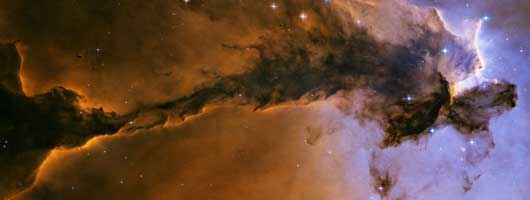Space Missions
Contributing to space research for over 30 years

The High Energy Astrophysics Group has developed, or has been a major contributor for, several instruments for space flight over the last third of a century. The first Orbiting Solar Observatory (OSO-1) carried a set of gamma-ray detectors designed and built at the University of Minnesota, and the data analysis was carried out at UCSD.
The third Orbiting Solar Observatory (OSO-3) mission carried the UCSD X-ray Telescope --- the first X-ray Group instrument on an orbiting satellite.
The seventh Orbiting Solar Observatory (OSO-7) mission carried two UCSD instruments --- the Cosmic X-ray Detector and the Solar X-ray Instrument --- to investigate high energy x-rays from both cosmic sources and solar flares.
The first High Energy Astronomy Observatory (HEAO-1) carried the UCSD High Energy X-ray and Low Energy Gamma Ray instrument, known as the HEAO A4 instrument, and carried out the most sensitive hard x-ray sky survey to date.
The UCSD High Energy X-ray Timing Experiment (HEXTE) is one of three instruments on the Rossi X-ray Timing Explorer (RXTE) mission, which study the broad band spectral and temporal properties of the thousand brightest sources in the sky.
The Astronaut Lung Function Experiment (ALFE) flew as part of the SpaceLab series of Space Shuttle missions. This was developed by a team at the UCSD Hospital in conjunction with the High Energy Astrophysics group, which provided the know-how on how to build space qualified instrumentation.
The detectors for the Burst and Transient Source Experiment (BATSE) on the Compton Gamma Ray Observatory (CGRO) were developed by the UCSD High Energy Astronomy group. This included both the scintillators and the photomultiplier subsystems.
As a member of the SpectroPhotometer Imager (SPI) team on the European Space Agency INTEGRAL mission, the High Energy Astrophysics group, along with a team at the University of California Berkeley, developed the Pulse Shape Discriminator (PSD) electronics, which will enhace the background rejection capabilities of the SPI detector system, and thus increase its sensitivity.
These instruments and the science they addressed are described in detail on the linked Web pages indicated to the right.